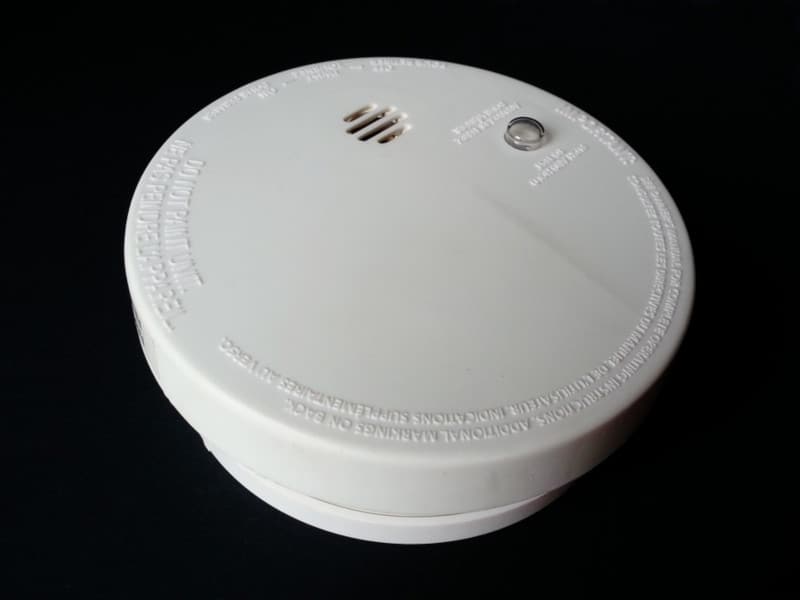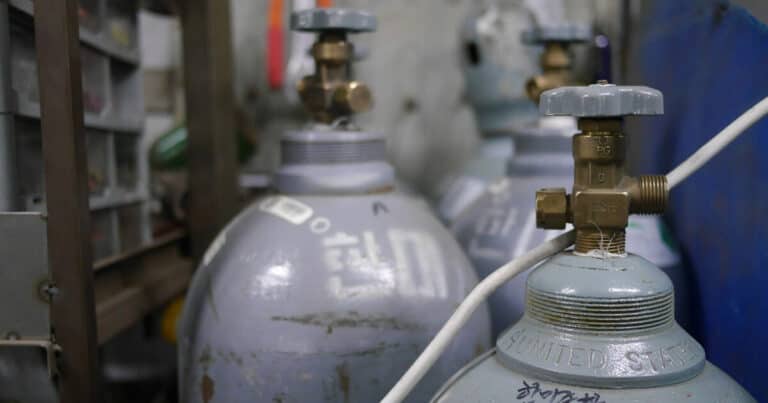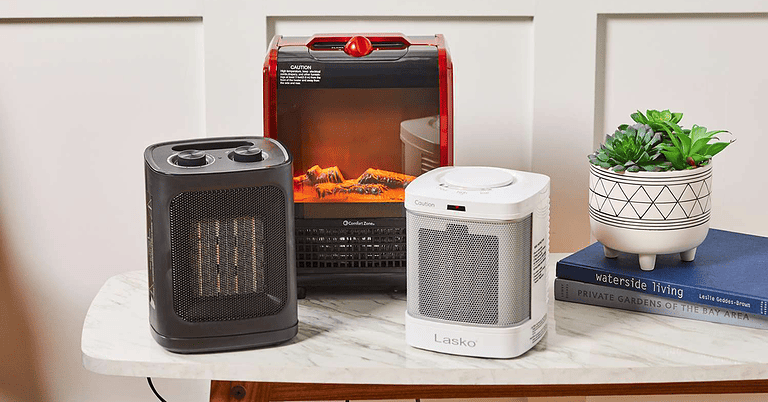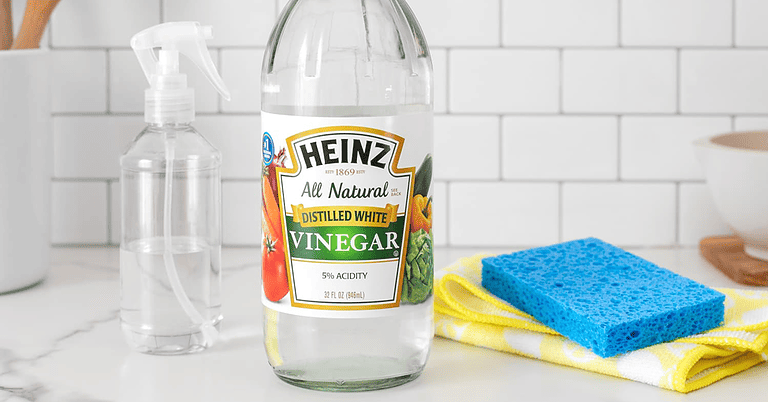Can You Get Carbon Monoxide Poisoning From Propane
Recent years have seen an increase in the usage of propane as an indoor heating source compared to oil, electric, and natural gas. Much of the reason is that heating fuel is less expensive compared to others, primarily electric.
As propane can be used to run indoor and outdoor heaters, grills, kitchen appliances, and a fireplace in a house, propane is practical. It can lower greenhouse gas emissions by a considerable amount. Propane is only used as a heating fuel by around 5% of US houses, so, as a result, the common question is, does burning propane produce carbon monoxide?
The quick answer to does propane emit carbon monoxide? When the heater or gas appliance works properly, heaters won’t leave you exposed to these odorless gasses, as they produce little to no carbon monoxide deadly gas.

However, should the heater be damaged, you’ll find propane appliances can produce carbon monoxide. Since it is a dangerous gas, you could discover that burning propane results in harm or death. However, this doesn’t mean propane heaters are dangerous. In our guide, you can learn more about how does propane produce carbon monoxide.
By the end, you’ll better understand when does propane give off carbon monoxide poisoning? Then, you’ll see what safety tips to follow and how to use a carbon monoxide alarm in your home to detect or avoid a dangerous carbon monoxide leak. (Read Will Propane Tanks Explode From Cold)
Will Propane Heating System Give Off Carbon Monoxide?
Carbon monoxide isn’t produced by propane heaters that are operating properly. Since carbon monoxide is extremely toxic to humans, most tragically killed in fires find they are dead long before the flames.
When someone breathes in carbon monoxide, they become ill and require 100% oxygen to recover. This situation causes so many people to worry when purchasing propane heaters.
The following symptoms up to two days after being in an arena, immediately upon exposure: throat and eye irritation, chest pain, and coughing or vomiting blood. A propane heater burning with incomplete combustion starts releasing carbon monoxide.
This gas byproduct isn’t what you get from an indoor propane heater and comes from not enough oxygen during combustion, such as under a 24:1 air-to-propane ratio, or can be found with a blocked burner.
Remember, a working indoor propane heater or heating system is safe and rarely releases carbon monoxide. However, faulty propane heaters could release carbon monoxide gases into your house.
How Do Propane Heaters Work
Similar to how propane torches operate, so do propane heaters. A torch generates heat, yet it doesn’t make for effective heating. A propane heater has many features that make it better to distribute heat effectively.
Propane is an adequate and clean-burning heating fuel that, when used in heaters, typically takes the form of a liquid that converts into gas under pressure.
Most propane heaters use an igniter to light the heater. Such as pressure applied to a quartz crystal that generates a spark. To distribute heat, propane heaters often use porcelain to spread flames in a pattern. In addition, they can come with a thermostat built-in.
In addition, you’ll likely have a manual flame control to operate your heater. One tip is never to use sprays such as hair spray close to an open flame.

Signs Of Carbon Monoxide Poisoning
These heaters work in such a way that with enough ventilation, poisoning from carbon monoxide is rare. While you can’t smell or see carbon monoxide, which could harm you without notice, you can be aware of any signs of carbon monoxide poisoning.
The best defense when using heaters indoors is to use a carbon monoxide detector in your house, besides ensuring you have enough ventilation where the heater is being used. One thing often overlooked is you should never use an outdoor propane heater inside your house, as these natural gas devices work differently. (Read Symptoms Of Overfilled Propane Tank)
Here are some symptoms of carbon monoxide poisoning:
-
- A metallic taste
- Headaches, Dizziness, and Nausea
- Breathlessness and loss of consciousness.
If you spot dead plants for unknown reasons, this can be a signal of carbon monoxide in the air.
Are All Propane Heaters Safe For Indoors?
Some propane heaters should not be used indoors. Indoor and outdoor propane heaters are the two different types of propane heaters, and you shouldn’t use outdoor propane heaters inside.
1. Outdoor Propane Heaters
Garages and sheds are the right places to use outdoor heaters, not homes and apartments. The difference comes from how they control carbon monoxide emissions.
If you leave the door open so the carbon monoxide may escape, they are safe to use in garages and sheds.
2. Indoor Propane Heaters
Indoor propane heaters cannot exhaust carbon monoxide gasses, so they possess oxygen sensors and automatic off switches.
Once they detect insufficient oxygen inside the room, they cut off your heater.
Do You Need Ventilation With a Propane Heater?
The most important safety tip is to use a propane heater with enough ventilation.
So, if your home doesn’t have proper ventilation, a propane heater could be dangerous for indoor use.
If your room’s ventilation is no good, a propane leak or a buildup of carbon monoxide could quickly accumulate in your living space.
Will A Carbon Monoxide Detector Detect Propane?
Unfortunately, propane leaks are not detectable by carbon monoxide detectors. Even with today’s security precautions, a carbon monoxide monitor cannot detect a propane leak.

Can You Leave a Propane Heater On All Night?
No, a propane heater isn’t safe indoors for overnight use. Under no circumstances should you leave your propane heater on all night, as even if you have enough ventilation, the risks of carbon monoxide poisoning are too high.
Carbon Monoxide (CO) and Propane
Carbon monoxide is the product produced from incomplete gas combustion in incorrectly adjusted appliances.
An “ideal burn” is produced during combustion by properly functioning propane appliances, which eliminates the risk of carbon monoxide poisoning. Poisoning from carbon monoxide can lead to severe injuries or even death. (Read Difference Between Topsoil And Lawn Soil)
Almost 25% of all responsible propane-related accidents are caused by carbon monoxide (CO).
1. Requirements of Propane Combustion
Three ingredients are needed for combustion: fuel, ignition, and air.
Without these three ingredients, combustion won’t occur, and the air-to-gas ratio must be acceptable for combustion to occur.
Equal parts propane and air won’t burn when ignited. Propane combustion occurs between 2.2 and 9.6 “limits of flammability.”
Combustion will occur anywhere between these two gas-to-air ratios, with the “ideal burn” being 4 parts propane to 96 parts air.
This ratio is the most efficient propane gas burn, and a blue flame will lead to the complete combustion of the burning propane.
2. Incomplete Propane Combustion
The incomplete combustion of propane results in the production of carbon monoxide.
A ratio of 4 parts propane to 96 parts air is considered ideal, but it can be higher or lower because of incomplete combustion.
There are two ways in which incomplete propane combustion can occur indoors:
- Less than 4 parts propane to 1 part air is considered a lean burn. The lean for example, lean burn would produce by mixing 2.5 parts propane with 97.5 parts air. Flames that seem to lift away from the burner and may eventually go out are signs of a lean burn.
- An air-to-propane ratio greater than 4 parts propane results in a propane-rich burn. A rich burn would produce from 8.5 parts propane to 91.5 parts air. It is easy to spot a rich burn because the flames are much larger than they should be and mostly yellow.
The appearance of the burner flame, the accumulation of soot from heaters, and water heater formation on windows or cool surfaces while the appliance is in use are visible signs of incomplete combustion indoors.
3. Carbon Monoxide Signs and Symptoms
Carbon monoxide is a toxic gas that is undetectable by smell and can harm or kill people, animals, and plants. Propane gas is not the only fuel that can cause carbon monoxide poisoning.
It is also a byproduct of incomplete natural gas combustion. Therefore, the best protection against carbon monoxide poisoning is the installation of functional CO detectors throughout a home’s living areas.
Both offline and online retailers carry carbon monoxide detectors. Take action immediately if you observe any of the following indications that carbon monoxide levels are likely high.
- Aldehydes – This toxic gas can be detected by smell; it leaves a metallic taste in the mouth after exposure and suggests that Carbon Monoxide is likely to present.
- Health Symptoms – Headaches, nausea, dizziness, shortness of breath, and lightheadedness are all signs of carbon monoxide poisoning. Medical care must come next, immediately followed by fresh air.
- Dead Plants – If the plants in your home have suddenly died or are withering, dangerous levels of carbon monoxide are likely to present.
Can I Use Propane Heaters In My Garage?
It’s safe to use indoor propane heaters in a garage. However, suppose the garage door is left open, and there is continuous airflow to allow the carbon dioxide to escape. In that case, you might occasionally use an outdoor propane heater within the garage.







